Carthage Shoe Manufacturing Company (former), later H. E. Williams Products, 106 South Main Street
Introduction
Text-to-speech Audio
Images
106 South Main as it looked in the 1920s.
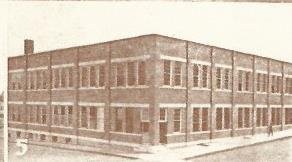
Juvenile Shoe Company ad for products produced in this building.
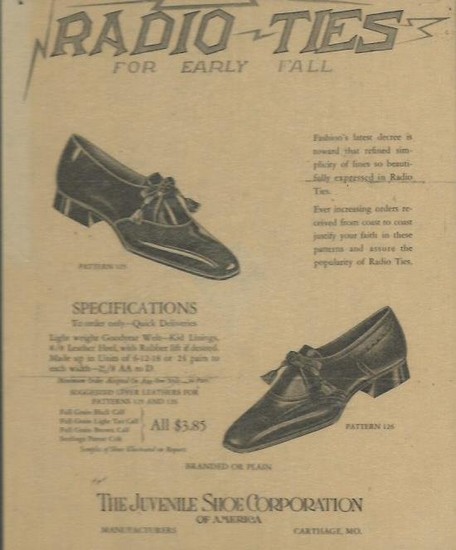
1925 Sanborn map showing original factory building before extension to the south in 1948.
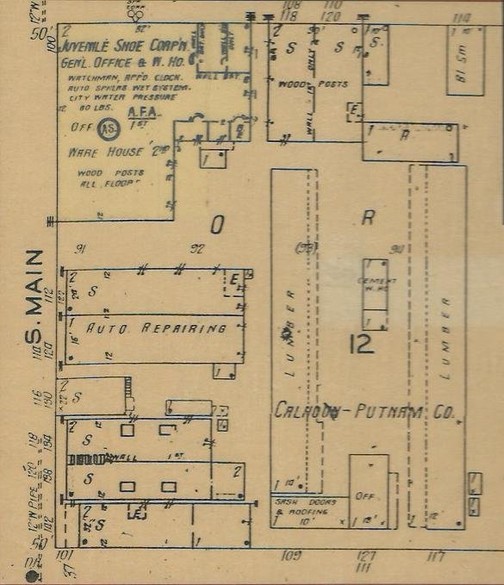
1960s image of H. E. Williams factory building. Central Avenue on the north side of the building was used as U.S. Highway 66, also known as Route 66.
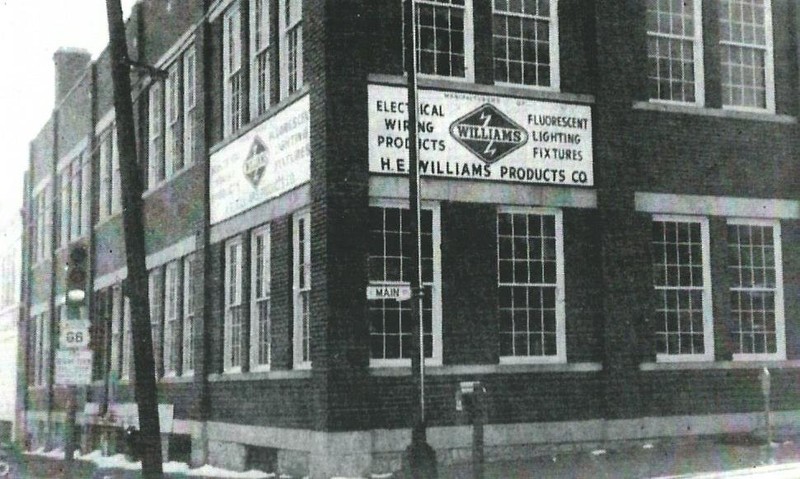
1941 Photograph courtesy H. E. Williams, Inc. Archives and featuring part of their workforce.
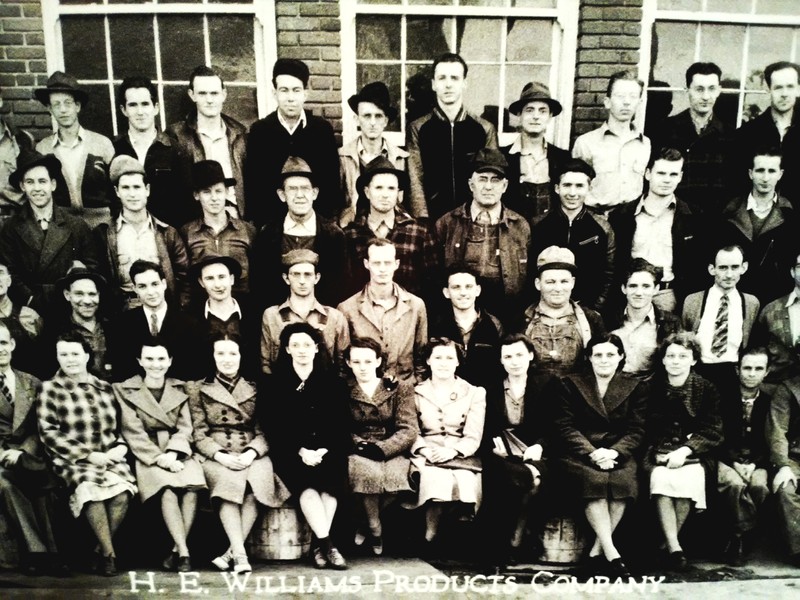
H. E. Williams window shades for automobiles on display in 175th Anniversary of Carthage 2017 Exhibit at the Powers Museum. Shades are from the museum's collection.
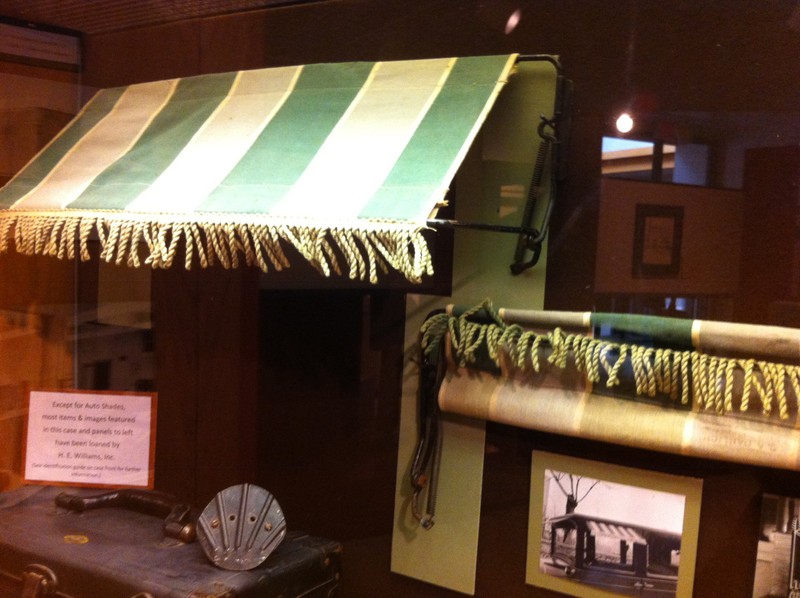
H. E. Williams outlet boxes, lent from company, for 175th Anniversary of Carthage 2017 Exhibit .
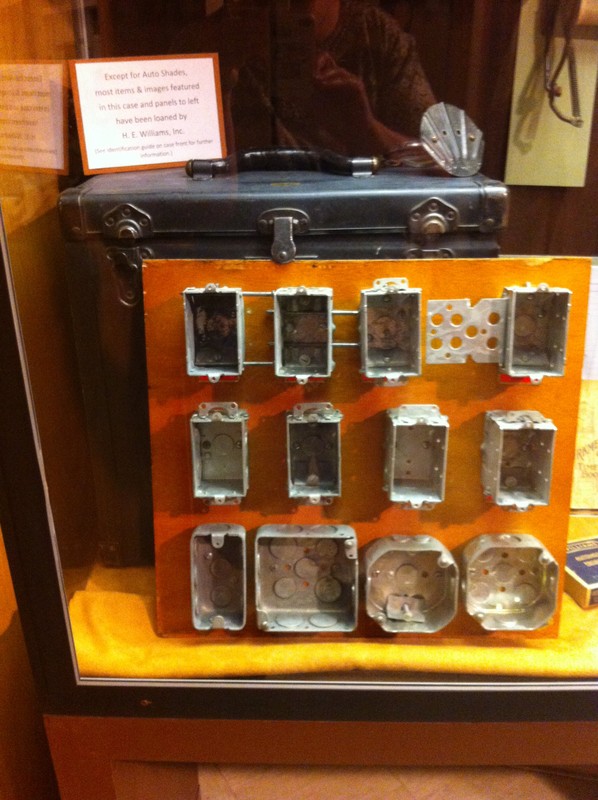
Gas caps manufactured by H. E. Williams and lent from company for the 175th Anniversary of Carthage 2017 Exhibit .
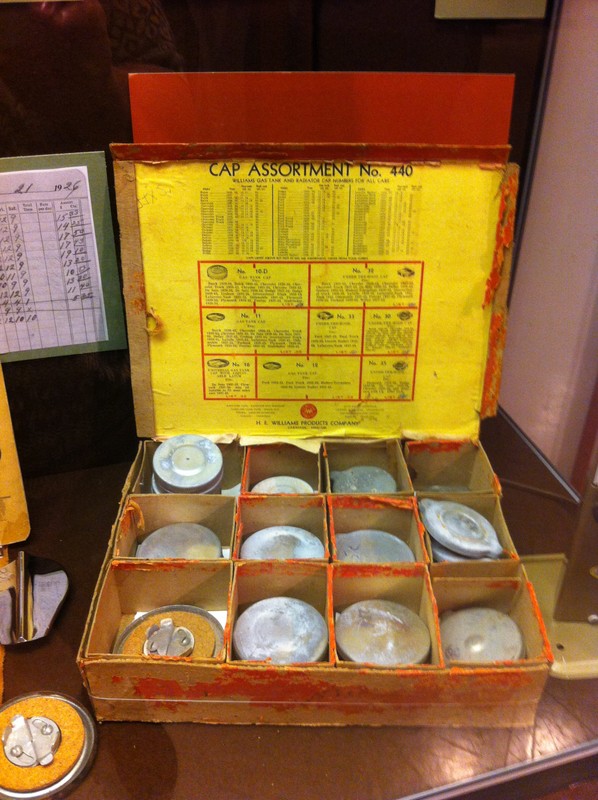
Digitization on CLIO is part of Powers Museum's "Digital Carthage" project in honor of Carthage's 175th Anniversary Celebration (March 28, 2017 through March 27, 2018).
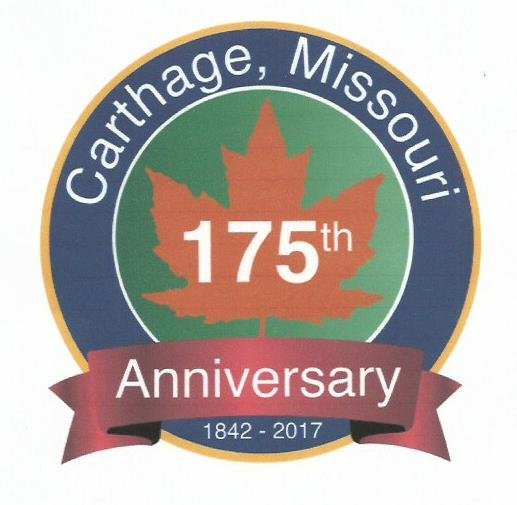
Funding for the Walking in the Wards tour was made possible by a grant from the Missouri Humanities Council and the National Endowment for the Humanities, Spring 2017.

Backstory and Context
Text-to-speech Audio
After sitting empty a couple years, this building became home to another local manufacturer, H. E. Willliams Products. Founded by Harold E. Williams, the company made a variety of products like potato mashers, lockers, sign board frames, automobile accessories, folding tables and many other metal products. In 1929 Williams moved his operations to this building. The factory was doubled in size in 1948 (brick expansion to south of older building) after converting its entire production line to fluorescent light fixtures in 1939. The company continued at this location until 1971 when the company, now called H. E. Williams, Inc., and headed by H.E.Williams' son John, moved to 831 West Fairview Avenue were it continues today under direction from a third generation of the Williams family.
Among other early locations that H. E. Williams produced his metal products were 106 East 2nd Street and 331 North Main Street.
"When H. E. attended the [1939] World's Fair and saw the introduction of fluorescent lighting as a viable source of illumination, he and his engineers started developing fixtures to house the new source" (1) of electrical lighting. The company also continued making electrical light switches and outlet boxes under H. E. Williams' patents (see image above from Powers Museum exhibit).
Among the buildings around the courthouse square that continue to use early Williams fluorescent light fixtures is the former Bank of Carthage Building (301 South Main Street, see Clio entry for this address) now the Carthage Deli and Ice Cream Shop. The fixtures in the restaurant's ceiling are early H. E. Williams fixtures from the late 1930s.
During World War II, the Williams company made bomb support clips and the framework for the bubble canopies for military aircraft. With steel rationed, the company also had to figure out how to manufacture its light fixtures with treated Masonite and the company archives has one example of a fixture from this time period.
Today, this building houses the Carthage Crisis Center.
Sources
Hansford, Michele. Images of America: Carthage Missouri. Charleston SC: Arcadia Publishing, 2000.
Peak, Michelle. "History Showroom" Power Point Program provided by H. E. Williams, Inc., March 2017. (1)
Powers Museum Vertical Files: Carthage Shoe Industry, H. E. Williams, Inc.
Utter, Wade and Hansford, Michele. Images of America: Carthage Missouri 1940 - 1990, Charleston SC: Arcadia Publishing, 2013.
1920s image former exhibit image of Powers Museum.
Advertisement former exhibit image of Powers Museum.
Map image former exhibit image of Powers Museum.
1960s image reproduced in 2011 Powers Museum Calendar; formerly published in several CHS yearbooks.
1941 Photograph courtesy H. E. Williams, Inc. Archives.
2017 Powers Museum exhibit photograph by Michele Hansford.
2017 Powers Museum exhibit photograph by Michele Hansford.
